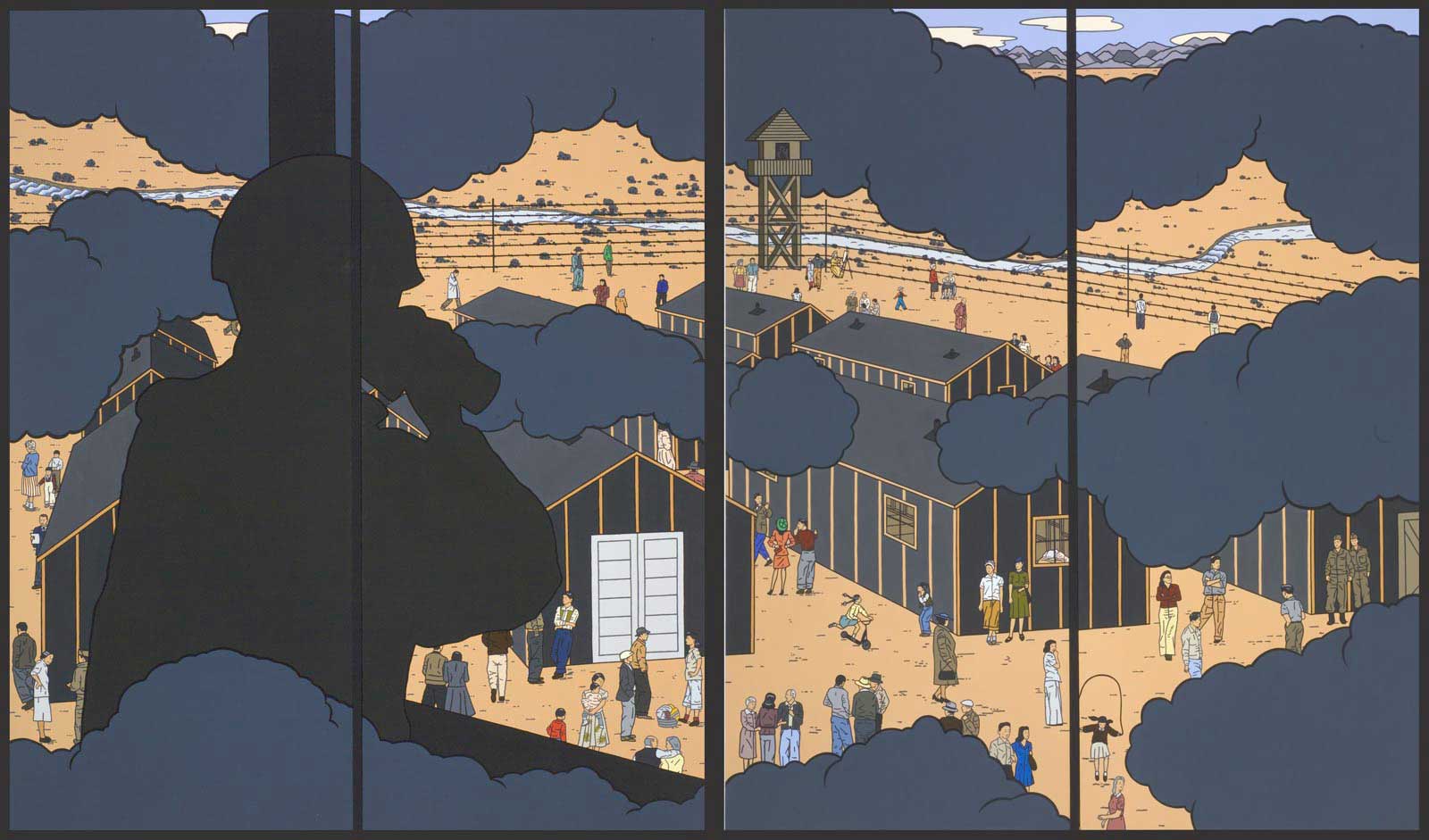| Roger Shimomura, Minidoka Series #2 The Exodus, 1974 |
By MISSY ROSENTHAL
Roger Shimomura conveys his troubling story of his family's relocation to a Japanese internment camp during World War II throughout his works; however Minidika Series #2 directly relates to his experience moving to various camps. Shimomura, a Japanese-American born in Seattle, and his family were moved to Camp Harmony in Puyallup, Washington and then to Minidoka camp in Idaho. Growing up during and experiencing the aftermath of the racial tensions resulting from World War II has greatly influenced his works.
Shimomura has become famous for conveying his highly political message in his pop art like style. He uses bright vibrant colors and sharp lines to create an ascetically pleasing work. He beautifully adds ionic japanese plant life and architecture such as the Itsukushima Shrine's red gate.
In Minidoka Series #2 The Exodus, Shimomura showcases the chaos that ensued throughout the Japanese-American community when transferring to these internment camps. Shimomura captures a image reminiscent of the Exodus from Egypt in the Judeo-Christian bible, through the water splitting the tents just like Moses split the red sea. Similar to Moses, Shimomura attempts to escape a life of prejudice and live life as an American. Conversely, Shimomura uses the shadow to depict the impending dark times for racial minorities in post-war American society. The historical Japanese garb represents the struggle to blend the two cultures: their identities as Americans and Japanese. Shimomura discusses racial prejudice in the United States through his use of symbolic images and pop art style.
